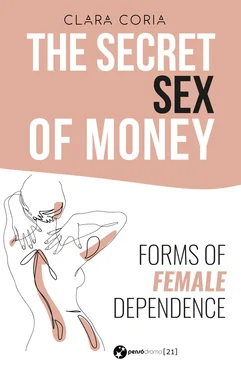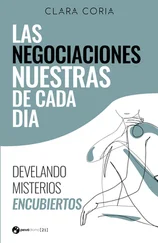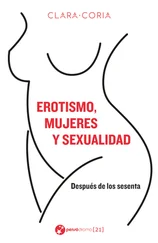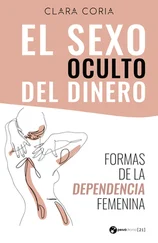Both meet with obstacles to generate a healthy change. The greatest obstacle in women is the difficulty in freeing themselves from the “maternal” model that lies at the base of the feminine ideal, whereas, in men, the obstacle is not being able to free themselves from the patriarchal model of hierarchy according to which they must always “have more”: more erections, more money, more wisdom, more authority, etc. in order not to run the risk of being regarded as “unmanly”. They are both trapped in the patriarchal power model based on hierarchy and the superiority of some over others. Thus, some women make the mistake of believing that attaining freedom is to “invert the situations of power” and subjugate men. And many men also make the mistake of thinking that losing privileges is falling into disgrace and losing virility. Men and women are not confronted by their differences – which enrich exchanges – but, rather, the power model they have incorporated. This is not a struggle between men and women; it is a struggle to perpetuate an authoritarian and hierarchical model in which both men and women are trapped.
A common error is to believe that the patriarchal model is exclusively masculine. It is not new for human beings to walk the paths of culture together and to become imbued with its traditions as a whole. Authoritarian and hierarchical cultures promote authoritarian and hierarchical people from both genders, even though each gender finds a different way of applying said hierarchical authoritarianism.
What I call patriarchy is a model of relationships between genders characterized by conceiving the differences between them in hierarchic terms. That is, we assume the existence of a natural hierarchy, with the males of the species at the top. This is a way of classifying human beings as superior or inferior. Within this model, equality cannot exist and, therefore, neither can solidarity. Both men and women have assimilated this model of power relationships, because we are all within a patriarchal culture. I have noticed that those men and women who dare to challenge the model are often better prepared to create relationships with a better quality of life. They both cease being confused and women no longer need to “invert the hierarchy” to feel free, and neither do men constantly need to reaffirm their manhood.
Finally, related to love and relationships, I want to insist on something as simple as it is obvious: that the surface is the consequence of the foundations it is based upon. In other words, that the way in which relationships and love develop is a necessary consequence of the model underlying the link. Both for men and women, loving the “significant other” from a patriarchal model is not the same as to do so from an equal model. It is not the same as taking up the social roles that are necessary for human development from a social imposition that implies that protection is exclusively masculine and that contention is exclusively feminine. It is not the same for the health and well-being of a couple for the women to be exclusively in charge with raising children and performing household chores whereas the man is allowed to enjoy a broad spectrum of relationships and domestic services. It is not the same as to accept the double standard, characteristic of patriarchy, which established centuries ago that there are women for enjoyment and women for breeding as natural. Just as it is not the same as men not knowing that female sexuality is multifaceted and that it does not exclusively rests on penetration. Men and women are trapped in these patriarchal impositions. Men often feel forced to submit themselves to a constant evaluation of their virility at the risk of being erased from the universe, and women suffer from a lack of satisfaction they sometimes attempt to conceal in order to avoid conflict with men. In sum, it is not the same to go through relationships and nurture love when the differences between genders promote privileges in some at the expense of others and that they are conceived in terms of hierarchy than in an equalitarian model that values differences and is enriched with them.
Independently from how each person understands and experiences love, it is important to keep in mind that the psychological well-being of a couple is highly conditioned by the power model installed by both. A grave mistake is to close one’s eyes and to avoid challenging the model that upholds the relationship. There is always a power model, and thus, to ignore it is a way of approving it and, therefore, perpetuating it.
It is necessary for men and women to move together, because, when we are separate, we are lost. It is necessary to review the patriarchal model of power because it is harmful and it traps women and men alike in crystallized roles and it plants the seed of discrimination and subsequent rebellion in the male and female subjectivities. It is necessary to redefine the concepts of love, money, power and relationships in the light of the changes that have taken place in humanity and with a power model that accepts equality. A model that is enriched with differences without said differences being conceived in terms of hierarchy. Men and women are neither better nor worse due to their differences. We are a part of the universe that needs all of its differences to maintain its life potential.
My proposal for us women and men to live together is to carry out the task of reviewing the patriarchal model and reconstructing another model that is not based on hierarchy. I know this is a difficult and constant task that requires determination and courage. I also know that few are willing to carry it out. An example of this, which I experienced myself, is that I coordinated a huge amount of consciousness-raising groups, but I never managed to convince professionals experienced in group tasks to train in the subject of the “sexual differentiation of money”, so that they could later coordinate their own consciousness-raising groups, both for women and men. The reason is simple: touching this subject implies highlighting the power models inherent in money and to become transgressors of a model that is currently a part of their own subjectivity. This task is probably a frightening one for most people.
The problem is not difference, but the hierarchy of difference.
Clara Coria
Speech at the VI Congress of the Argentine Mental Health Association about “Sex and power, clinical practice, culture and society”; Buenos Aires, Mayo 21st, 2011.
Back in 1981, I discovered impediments that limited the way I handled money. Concerned and intrigued, I resolved to study this phenomenon by delving into myself and other women. I was particularly surprised because my economic independence, which began in adolescence, did not explain my limited autonomy. Throughout my life, I have made decisions, faced new situations and sought new horizons contrary to established patterns. I was, after all, what is commonly known as an independent woman. Yet not in my relationship with money.
My heart would race unexpectedly whenever I had to settle money matters. Though I was able to conceal my inner turmoil in such moments, it left me drained.
Pursuing a debt, discussing the terms of a contract, making an important purchase, justifying my fees, reaching agreements on financial responsibilities with my spouse, clarifying what I considered “mine” and “ours”, establishing economic criteria for my children, and all those other “trifles” of daily life did not arise spontaneously.
Far from it, I was beset by unwelcome stomachaches, ethical concerns (“money is demeaning”), aesthetic discomfort (“it’s dirty and ugly”), and indefinite deferrals (“I’ll deal with it tomorrow”).
They either paralyzed me or forced me to adopt vindictive stances and/or one of “what do I care”.
Читать дальше












